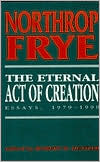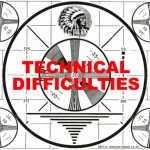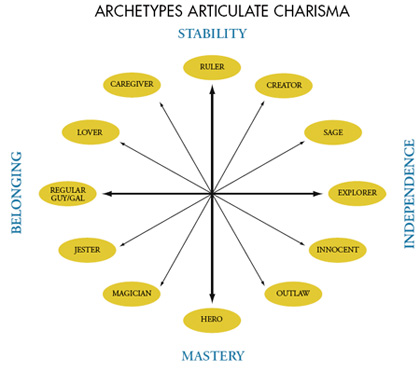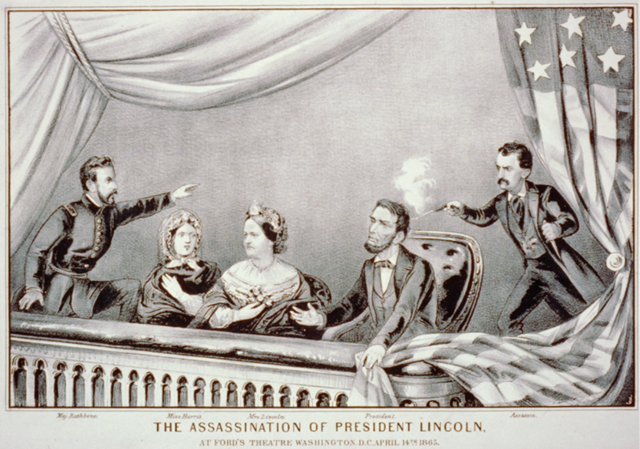
Our technical problems have been resolved. All our links –including our Comments links — are now functioning again. Be sure therefore to check out all of Bob Denham’s post earlier today on Archetype.

Our technical problems have been resolved. All our links –including our Comments links — are now functioning again. Be sure therefore to check out all of Bob Denham’s post earlier today on Archetype.

Further to Bob’s post earlier today:
Some more Frye on ghosts, from “Henry James and the Comedy of the Occult”:
Such a story as The Sacred Fount brings the relation of reality and realism into sharp confrontation: either there is some hidden reality that the narrator’s fantasies point to, however vaguely and inaccurately, or there is no discernible reason for setting them forth at all. This principle, which runs through all of James’s work, gives the occult stories a particular significance. A ghostly world challenges us with the existence of a reality beyond realism which still may not be identifiable as real.
He turned once again to his ghost story [The Sense of the Past] just before he died, because in its fantasy he saw the reality he had sought as an artist, whereas the realism in the social manners of his time had left him with a sense of total illusion.

Our McMaster Library server seems once again to be struggling a bit today, so we apologize for any inconvenience. The posts are fine except the ones that are split by the “read the rest of this entry” caption.

Reading Bob’s post on archetype reminds me how readily I have over the years slipped into referring to just about every verbal phenomenon in Frye as an “archeype” of some sort. I have done so on the principle –which (as Bob also notes) Frye himself acknowledges — that he is an “archetypal critic” in the sense that archetype refers to a recurring pattern of signfication. This seems consisent with Frye’s critical nomenclature generally: the dialectic at work in all of his criticism means that certain terms seem inevitably to expand their reference. For scholars of my generation, for example, the key terms to understanding Frye seem invariably to be “myth,” “metaphor,” and “archetype.” Without an expansive understanding of those words (but also with a very specific understanding that they possess immanent and not transcendental reference), we’d hardly know where to begin at all.

Ghosts
Several of my plans have come smack up against a theory of Bardo, & I can’t help wondering if I don’t need at least a literary theory of ghosts, if not of the whole supernatural. I must start with the vampire theme in Wuthering Heights & see if I can attach it to my floating notions about the echo & the preservation of identity in DM [Daisy Miller], & of the returning ghost in Senecan revenge plays as neurotic, blocked & bound to a pattern of recurrence. The ghost theme in Eliot’s Waste Land (water-nymphs recalling the bodiless souls of Purgatory) winds up with a quotation from the Spanish Tragedy [ll. 266 ff., 432]. Also the Kurtz business, Kurtz being, like Heathcliffe, a “lost violent” soul [The Hollow Men, l. 15–16]. (Northrop Frye’s Notebooks for “Anatomy of Criticism,” CW 23, 222)
Angels
If I had been out on the hills of Bethlehem on the night of the birth of Christ, with the angels singing to the shepherds, I think that I should not have heard any angels singing. The reason why I think so is that I do not hear them now, and there is no reason to suppose that they have stopped. (The Critical Path, 114)
History tells the reader what he would have seen if he’d been present, say, at the assassination of Caesar. But what the Gospels tell us is rather something like this: if you had been present on the hills of Bethlehem in the year nothing, you might not have heard a chorus of angels. But what you would have seen and heard would have missed the whole point of what was actually going on. Thus, the antitypes of history and of prophecy as we have them in the gospel and the apocalypse give you not what you would have seen and heard, or what I would have seen and heard, but what was actually going on which we don’t have the spiritual vision to reach to. (“Kerygma,” in Northrop Frye’s Notebooks and Lectures on the Bible and Other Religious Texts, CW 13, 588)

Responding the Clayton Chrusch:
Frye uses the word “archetype” in different contexts for different purposes. Peter Yan reminds us that Frye called himself a “terminological buccaneer,” and Frye was forever taking over his critical language from other writers. The obvious example is his borrowing mythos, ethos, dianoia, melos, lexis, and opsis from Aristotle’s account of the qualitative parts of dramatic tragedy. In Frye these words hardly resemble at all the meanings that the literal‑minded Aristotle assigned them in the Poetics. Frye redefines them and greatly expands their meaning for his own purposes. In this respect Frye is no different from any other critic. It often takes considerable digging to discover what critics mean by this or that term. A great deal of ink has been spilt in the effort to speculate on what Plato meant by mimesis (certainly different from what Aristotle meant by the term), and to what Aristotle meant by katharsis, Longinus by ekstasis, Sidney by “figuring forth,” Dryden by “nature,” Pope by “wit,” Keats by “Negative Capability,” and so on.
The word “archetype” was perhaps an unfortunate choice because of its association with Jung. Thus, David Richter is led to call Frye a psychoanalytic critic because, like Jung, he used the word “archetype.” Frye read a good deal of Jung, but his appropriation of the word archetype antedates most of what he read in Jung. In reading around in the eighteenth‑century as preparation for writing Fearful Symmetry, he stumbled on the conception of archetype in The Minstrel by James Beattie (the writer mentioned by Peter Yan). No one would have ever guessed that a footnote in a relatively obscure poem by an obscure poet (and moral philosopher) would have been the source of Frye’s conception of the archetype, given many obvious possibilities from Plato’s “forms” on, and we might think Frye to be engaging in a bit of leg‑pulling here were it not for his more extensive discussion of his debt to Beattie’s footnote in “Criticism, Visible and Invisible.,” where he writes:
It is true that I call the elements of literary structure myths, because they are myths; it is true that I call the elements of imagery archetypes, because I want a word which suggests something that changes its context but not its essence. James Beattie, in The Minstrel, says of the poet’s activity:
From Nature’s beauties, variously compared
And variously combined, he learns to frame
Those forms of bright perfection
and adds a footnote to the last phrase: “General ideas of excellence, the immediate archetypes of sublime imitation, both in painting and in poetry.” It was natural for an eighteenth-century poet to think of poetic images as reflecting “general ideas of excellence”; it is natural for a twentieth-century critic to think of them as reflecting the same images in other poems. But I think of the term as indigenous to criticism, not as transferred from Neoplatonic philosophy or Jungian psychology. However, I would not fight for a word, and I hold to no “method” of criticism beyond assuming that the structure and imagery of literature are central considerations of criticism. Nor, I think, does my practical criticism illustrate the use of a patented critical method of my own, different in kind from the approaches of other critics. (“The Critical Path” and Other Writings on Critical Theory 1963–1975, 154–5)

1942:
[135] Another S.C.R. [Senior Common Room] one: “they always assassinate the wrong man.”